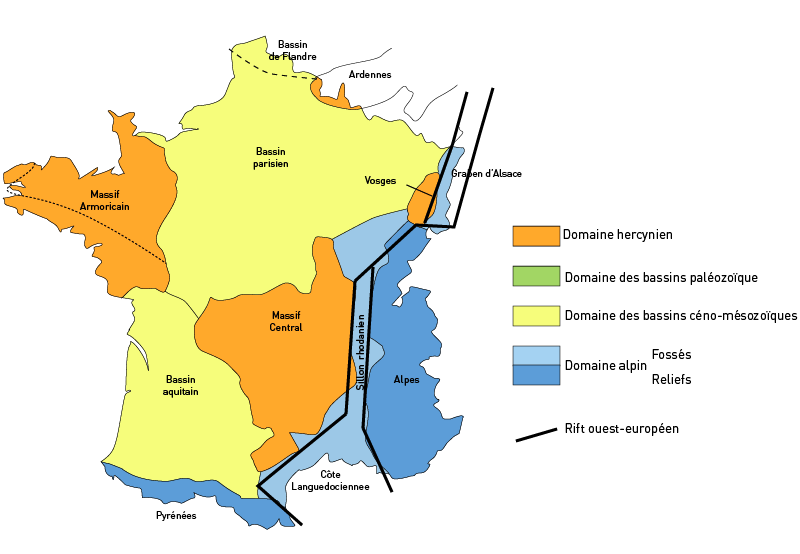|
Ludiès
Ludiès (; Occitan: Ludièrs) is a commune in the Ariège department in southwestern France. Ludiès is a rural commune with 94 inhabitants in 2019, having experienced a sharp increase in population since 1975. It is part of the Pamiers attraction area. Its inhabitants are called Ludéens or Ludéennes. Geography The town is located in the department of Ariegè, in the region of Occitania.. It is located away from Foix, prefecture of the department, and away from Pamiers which is the subprefecture. The village neighbours several places: Saint-Amadou away, La Bastide-de-Lordat (), Le Carlaret (), Saint-Félix- de-Tournegat (), Les Pujols (), Lapenne (), Trémoulet (), Vals (). Geology and relief The town is located in the Aquitaine Basin, the second largest sedimentary basin in France after the Paris Basin, the entire territory being covered by superficial formations. The outcropping land on the municipal territory is made up of sedimentary rocks dating from ... [...More Info...] [...Related Items...] OR: [Wikipedia] [Google] [Baidu] |
Communes Of France
The () is a level of administrative division in the French Republic. French are analogous to civil townships and incorporated municipalities in the United States and Canada, ' in Germany, ' in Italy, or ' in Spain. The United Kingdom's equivalent are civil parishes, although some areas, particularly urban areas, are unparished. are based on historical geographic communities or villages and are vested with significant powers to manage the populations and land of the geographic area covered. The are the fourth-level administrative divisions of France. vary widely in size and area, from large sprawling cities with millions of inhabitants like Paris, to small hamlets with only a handful of inhabitants. typically are based on pre-existing villages and facilitate local governance. All have names, but not all named geographic areas or groups of people residing together are ( or ), the difference residing in the lack of administrative powers. Except for the municipal arrondi ... [...More Info...] [...Related Items...] OR: [Wikipedia] [Google] [Baidu] |
Trémoulet
Trémoulet (; oc, Tremolet) is a commune in the Ariège department in southwestern France. Population Inhabitants of Trémoulet are called ''Trémouletois''. See also *Communes of the Ariège department The following is a list of the 327 Communes of France, communes of the Ariège (department), Ariège Departments of France, department of France. The communes cooperate in the following Communes of France#Intercommunality, intercommunalities (a ... References Communes of Ariège (department) Ariège communes articles needing translation from French Wikipedia {{Ariège-geo-stub ... [...More Info...] [...Related Items...] OR: [Wikipedia] [Google] [Baidu] |
Seigneur
''Seigneur'' is an originally feudal title in France before the Revolution, in New France and British North America until 1854, and in the Channel Islands to this day. A seigneur refers to the person or collective who owned a ''seigneurie'' (or ''seigneury'')—a form of land tenure—as a fief, with its associated rights over person and property. A seigneur could be an individual—male or female (''seigneuresse''), noble or non-noble (''roturier'')—or a collective entity such a religious community, monastery, seminary, college, or parish. This form of lordship was called ''seigneurie'', the rights that the seigneur was entitled to were called ''seigneuriage'', and the jurisdiction exercised was ''seigneur justicier'' over his fief. In the wake of the French Revolution, seigneurialism was repealed in France on 4 August 1789 and in the Province of Canada on 18 December 1854. Since then, the feudal title has only been applicable in the Channel Islands and for sovereign princ ... [...More Info...] [...Related Items...] OR: [Wikipedia] [Google] [Baidu] |
Rigaud De Vaudreuil
Rigaud may refer to: People *Cyrille Rigaud (1750–1824), French poet from Occitania *Auguste Rigaud (1760–1835), French poet *André Rigaud (1761–1811), Haitian revolutionary * Clément Rigaud (b.1984), French football player * Émile Rigaud (1824-1890), French lawyer and politician * François-Pierre Rigaud de Vaudreuil (1703-1779), Governor of Montreal, New France (now Canada) *Gaspard Rigaud (1661-1705), French painter *George Rigaud (1905-1984), Argentine film actor * Hyacinthe Rigaud (1659–1743), French baroque portrait painter * Jean Rigaud (1912–1999), French painter *John Francis Rigaud (1742-1810), French/Italian painter * Joseph Hyacinthe François de Paule de Rigaud, Comte de Vaudreuil (1740-1817), French nobleman * Louis-Philippe de Rigaud de Vaudreuil (1691-1763), French naval officer * Philippe de Rigaud Vaudreuil (c.1643–1725), Governor-general of New France (now Canada) *Pierre de Rigaud, Marquis de Vaudreuil-Cavagnial (1698–1778), Canadian-born French G ... [...More Info...] [...Related Items...] OR: [Wikipedia] [Google] [Baidu] |
Garonne
The Garonne (, also , ; Occitan, Catalan, Basque, and es, Garona, ; la, Garumna or ) is a river of southwest France and northern Spain. It flows from the central Spanish Pyrenees to the Gironde estuary at the French port of Bordeaux – a length of , of which is in Spain (Val d'Aran); The Ratera-Saboredo cirque has been pointed by many researchers as the origin of the Garonne.Faura i Sans (M.); Sobre hidrología subterránea en los Pirineos Centrales de Aragón y Cataluña. Bol. de la Real Soc. de Hist. Nat, vom. XVI, pgs. 353-354. Madrid, 1916. The third thesis holds that the river rises on the slopes of Pic Aneto at above sea level and flows by way of a sinkhole known as the '' Forau de Aigualluts'' () through the limestone of the Tuca Blanca de Pomèro and a resurgence in the Val dera Artiga above the Aran Valley in the Spanish Pyrenees. This underground route was suggested by the geologist Ramond de Carbonnières in 1787, but there was no confirmation until 1931, whe ... [...More Info...] [...Related Items...] OR: [Wikipedia] [Google] [Baidu] |
Institut National De La Statistique Et Des études économiques
The National Institute of Statistics and Economic Studies (french: link=no, Institut national de la statistique et des études économiques), abbreviated INSEE or Insee ( , ), is the national statistics bureau of France. It collects and publishes information about the French economy and people and carries out the periodic national census. Headquartered in Montrouge, a commune in the southern Parisian suburbs, it is the French branch of Eurostat. The INSEE was created in 1946 as a successor to the Vichy regime's National Statistics Service (SNS). It works in close cooperation with the Institut national d'études démographiques (INED). Purpose The INSEE is responsible for the production and analysis of official statistics in France. Its best known responsibilities include: * Organising and publishing the national census. * Producing various indices – which are widely recognised as being of excellent quality – including an inflation index used for determining the rates o ... [...More Info...] [...Related Items...] OR: [Wikipedia] [Google] [Baidu] |
Cadastre
A cadastre or cadaster is a comprehensive recording of the real estate or real property's metes and bounds, metes-and-bounds of a country.Jo Henssen, ''Basic Principles of the Main Cadastral Systems in the World,'/ref> Often it is represented graphically in a cadastral map. In most countries, legal systems have developed around the original administrative systems and use the cadastre to define the dimensions and location of land parcels described in legal documentation. A land parcel or cadastral parcel is defined as "a continuous area, or more appropriately volume, that is identified by a unique set of homogeneous property rights". Cadastral surveys document the Boundary (real estate), boundaries of land ownership, by the production of documents, diagrams, sketches, plans (''plats'' in the US), charts, and maps. They were originally used to ensure reliable facts for land valuation and taxation. An example from early England is the Domesday Book in 1086. Napoleon established a ... [...More Info...] [...Related Items...] OR: [Wikipedia] [Google] [Baidu] |
Cenozoic
The Cenozoic ( ; ) is Earth's current geological era, representing the last 66million years of Earth's history. It is characterised by the dominance of mammals, birds and flowering plants, a cooling and drying climate, and the current configuration of continents. It is the latest of three geological eras since complex life evolved, preceded by the Mesozoic and Paleozoic. It started with the Cretaceous–Paleogene extinction event, when many species, including the non-avian dinosaurs, became extinct in an event attributed by most experts to the impact of a large asteroid or other celestial body, the Chicxulub impactor. The Cenozoic is also known as the Age of Mammals because the terrestrial animals that dominated both hemispheres were mammalsthe eutherians (placentals) in the northern hemisphere and the metatherians (marsupials, now mainly restricted to Australia) in the southern hemisphere. The extinction of many groups allowed mammals and birds to greatly diversify so that l ... [...More Info...] [...Related Items...] OR: [Wikipedia] [Google] [Baidu] |
Superficial Deposits
Superficial deposits (or surficial deposits) refer to geological deposits typically of Quaternary age (less than 2.6 million years old). These geologically recent unconsolidated sediments may include stream channel and floodplain deposits, beach sands, talus gravels and glacial drift and moraine. All pre-Quaternary deposits are referred to as bedrock. Types and history There are several types of superficial deposit, including raised beaches and brickearth. These were formed in periods of climate change during the ice ages. The raised beaches were generally formed during periods of higher sea level, when ice sheets were at a minimum, and the sand and shingle deposits can be seen in many low cliffs. The brickearth is originally a wind-blown dust deposited under extremely cold, dry conditions but much has been re-deposited by flood water and mixed with flints. Superficial deposits were originally recorded only onshore and around the coast where they were laid down by various natu ... [...More Info...] [...Related Items...] OR: [Wikipedia] [Google] [Baidu] |
Paris Basin
The Paris Basin is one of the major geological regions of France. It developed since the Triassic over remnant uplands of the Variscan orogeny (Hercynian orogeny). The sedimentary basin, no longer a single drainage basin, is a large sag in the craton, bordered by the Armorican Massif to the west, the Ardennes-Brabant axis to the north, the Massif des Vosges to the east, and the Massif Central to the south.Duval, B.C., 1992, Villeperdue Field, In Giant Oil and Gas Fields of the Decade, 1978-1988, AAPG Memoir 54, Halbouty, M.T., editor, Tulsa: American Association of Petroleum Geologists, Extent The region usually regarded as the Paris Basin is rather smaller than the area formed by the geological structure. The former occupies the centre of the northern half of the country, excluding Eastern France. The latter extends from the hills just south of Calais to Poitiers and from Caen to the brink of the middle Rhine Valley, east of Saarbrücken. Geography The landscape is one of ... [...More Info...] [...Related Items...] OR: [Wikipedia] [Google] [Baidu] |




